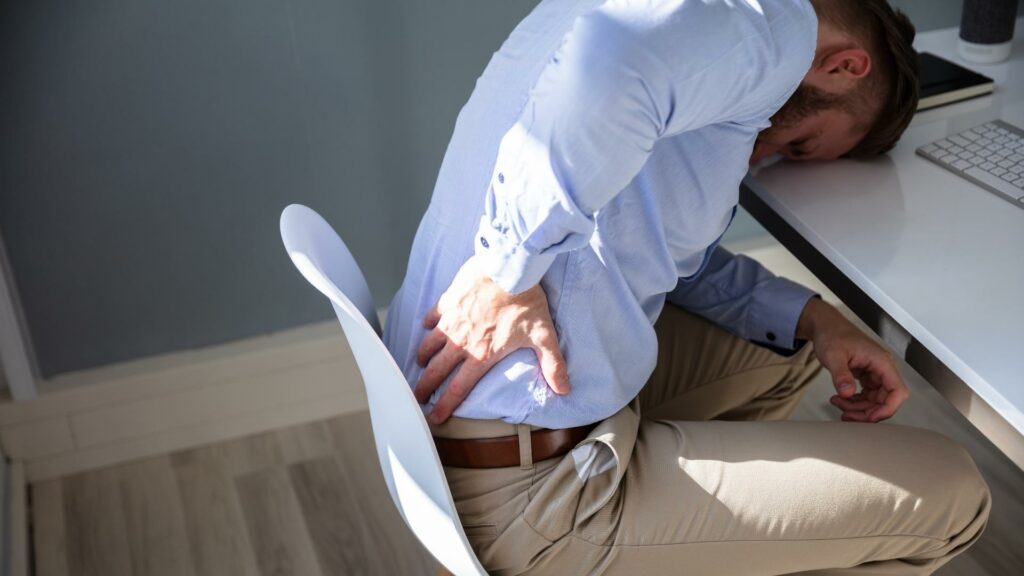
Do Tight Muscles Flatten The Lower Back Curve?
The question of a flattened lower back curve, lumbar hypo-lordosis is one that can come up in conversation as a result of spinal imaging, say MRI or X-ray. Sometimes even statements as to the curvature in your lower back might be made after a physical examination. Examination from the surface, or more specifically postural examinations without imaging are however notoriously inaccurate, giving rise to many false conclusions. Examining on X-ray standing is the most accurate way of establishing the resting curve of an individual and constitutes a reliable method of evaluation.
Many times however, particularly on MRI’s we’ve seen patients and members over the years who’ve been given the impression that tightness in their back muscles has caused the flattening of their lumbar spine, having this incorrect conclusion because most of the time it’s been written in the report!
Shocking I know!
But true.
Consequences of assuming the flattened lumbar curve is due to muscle spasm
One of the prescriptions that is a result of this finding is: “stretch out the tight muscles”, which makes sense, if we believed that muscle spasm of the back muscles was the cause. However let us break this down for a moment.
What we know from the image, is that the lumbar spine is certainly flattened, more than it should be. Now, what do the low back muscles do? They increase the lordosis of the lower back, they provide extension support to the lumbar spine. So if they were tight and in need of stretching, we would assume the spine would be stuck in an extended position, i.e TOO MUCH CURVE, or “hyper-lordosis”.
So what might happen in the case that someone does have a flattened lordosis in the low back? They would be chronically pulling the lumbar spine muscles apart, stretching them, as a result these muscles would become grumpy, tight, stiff, uncomfortable. The idea that stretching them MORE is the answer, rounding and flattening the lordosis more, is nonsensical. Yet exercises like knee hugs, child pose and the like are routine prescribed.
And we wonder why people do not get better from back pain…
They’ve got it the wrong way round
Hopefully you can see from the above, that the problem is inverted. Unfortunately, a lifetime of sedentary behaviour and lack of care for the lower back leads to a rounding and “flattening of the lumbar lordosis”. This creates repetitive strain patterns in the lower lumbar spine focusing forces through the lower regions of the lumbar spine, as well as permanently stretching the lumbar muscles, holding them in a position of chronic mechanical disadvantage. This is why the muscles are tight, the hypo lordosis as well as subsequent injuries to the segments of the spine, creates an environment where the muscles of the lower back inevitably become stiff, tense, irritable and achey.
What muscles can actually contribute to a reduced low back curve?
Let’s face it, you’re highly unlikely to get an MRI or X-ray for the lower back if you’re feeling A-OK. Most of the time these scans come after a history of back problems. These back problems usually affecting the L4, L5 and L5, S1 segments of the spine. As we’ve mentioned in many an article and video before, these segments are associated with the control of muscles such as the hamstring group of muscles. These muscles can explicitly effect the lower back, for example, hamstrings will have the effect of pulling the pelvis posteriorly and thus flattening the lumbar spine by virtue of its connection.
On the front, we would have the rectus abdominus muscle or “6-pack”. Now you might be thinking, “I don’t have a 6 pack” well trust me, it’s there! And if for example we do sit ups, or we have a severe stomach ache, contracture of this muscle will pull the pelvis in the same direction, only this time the anchor is on the front, instead of the back of the pelvic ring.
Coincidentally, some of the medications people will often be prescribed for back pain can cause abdominal discomfort, ibuprofen being one. If you have a bad back, and then are rounding over because of abdominal discomfort as a result of the pain medication, it’s easy to see how this can lead to a downward spiral. A topic for another time.
Is a flattened lower back curve common?
In our experience, so many factors are at play in the lower back but one feature is relevant in the vast majority of people these days. Lifestyles drastically favour the rounding of the lower back curve which has obvious consequences, some of which you’ve probably experienced already. The simple fact of the matter is that stretching even the right muscles is of limited effect in the short term. We must provide strength and protection of our lower back first so the injury can heal, that’s not to say that stretching won’t be a helpful adjunctive practice. One of the best stretches to help support your normal lower back curve is the towel exercise a cornerstone of the back in shape program and one of the lifelong healthy back habits everyone should adopt.
Just please, stop devoting extra time to exercises that round your lower back more, you don’t need this!









Responses